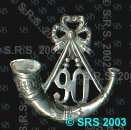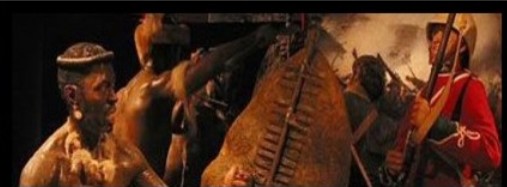| Latest topics | » The Pictorial World - March 15th 1879 Yesterday at 1:13 pm by ben2000 » The lost diary of Pvt James Owen Thu Jul 25, 2024 12:03 pm by miklew » Last of the 24th at Isandhlwana Wed Jul 24, 2024 6:16 pm by John Young » What was the uniform of field marshals/generals in the zulu war? Mon Jul 22, 2024 6:53 am by John Young » Henderson and the NNH at Rorke's Drift  Sat Jul 20, 2024 12:17 pm by SRB1965 » Capt. D. Hayes 1/3rd Regt., NNC Thu Jul 18, 2024 11:11 am by Julian Whybra » The Wrecked Camp Wed Jul 17, 2024 4:33 pm by Julian Whybra » Private N/N John Robert Branch 90th Regiment and his discovered diary Mon Jul 15, 2024 8:53 pm by 1879graves » Private John Scott 24th Regiment a fugitive at large Sun Jul 14, 2024 12:06 pm by 1879graves » 90th foot sgt T. Collins 214 Sun Jul 14, 2024 10:57 am by johnman » Baron Von Steitencron Wed Jul 10, 2024 3:10 pm by Julian Whybra » Sgt Joseph Windridge, Defender of Rorke's Drift - Memorial Tue Jul 09, 2024 3:15 am by 90th » Writing advice Sun Jul 07, 2024 4:04 pm by Julian Whybra » South Africa 1877-79, 1 clasp, 1877-8-9 (4389 Fr. Sergt. S. Smith. O/2. Bde. R.A.) Sun Jul 07, 2024 9:30 am by rai » The trashing of the Zulu monument to the brave warriors at Isandlawana March 12, 2024 has been blamed on scrap metal scavengers. Thu Jul 04, 2024 7:41 pm by ADMIN» The Goodwill Zulu Festival: Celebrating the Welsh and KwaZulu Natal Shared Heritage. Thu Jul 04, 2024 7:27 pm by ADMIN» Any nominal role of G Coy 2/24th regiment  Thu Jul 04, 2024 11:18 am by Wayne » Bassage Diary Thu Jul 04, 2024 9:31 am by Julian Whybra » Prior to Sihayo's Kraal  Thu Jul 04, 2024 9:19 am by 90th » British Fort Locations Thu Jul 04, 2024 3:40 am by 90th » Sergeant 1064 Tom Hick / Hicks G Company 2/24th Regiment Wed Jul 03, 2024 11:05 am by Julian Whybra » A Hungarian soldier in the Zulu War (?) Fri Jun 28, 2024 2:31 pm by Mr M. Cooper » Private 25B/279 Henry Sears Bugler E Company 24th Reg. KIA Isandlwana Thu Jun 27, 2024 1:07 pm by gardner1879 » Hamilton Browne's birthday Fri Jun 21, 2024 9:22 am by Julian Whybra » Zulu "Corps" Thu Jun 20, 2024 6:01 pm by Hobbes » Army Pay Department Personnel Thu Jun 20, 2024 11:49 am by Julian Whybra » Ntshingwayo birth date Sun Jun 16, 2024 11:37 am by Hobbes » Zibhebhu and Cetshwayo's family Wed Jun 05, 2024 9:11 pm by Julian Whybra » Smith's Store/Hotel Wed Jun 05, 2024 6:06 pm by Julian Whybra » Corporal James Frowen Williams F Company.  Tue Jun 04, 2024 5:20 pm by Julian Whybra » Shaka iLembe Sat Jun 01, 2024 1:27 pm by Jon84 » Bugler 1415 Thomas Finn / Flin 90th Regiment  Sat May 25, 2024 11:28 am by johnman » Inspector-General Evelyn Richard Hugh Pollard Tue May 14, 2024 10:13 am by ADMIN» Alfred Fairlie Henderson photographs. Sat May 11, 2024 8:01 am by Julian Whybra » Fairlie's Native Police Thu May 02, 2024 9:12 pm by Hobbes |
| July 2024 | | Mon | Tue | Wed | Thu | Fri | Sat | Sun |
|---|
| 1 | 2 | 3 | 4 | 5 | 6 | 7 | | 8 | 9 | 10 | 11 | 12 | 13 | 14 | | 15 | 16 | 17 | 18 | 19 | 20 | 21 | | 22 | 23 | 24 | 25 | 26 | 27 | 28 | | 29 | 30 | 31 | | | | |  Calendar Calendar |
|
| Top posting users this month | |
| New topics | » The Pictorial World - March 15th 1879 Yesterday at 1:13 pm by ben2000 » The lost diary of Pvt James Owen Thu Jul 25, 2024 12:03 pm by miklew » Last of the 24th at Isandhlwana Wed Jul 24, 2024 5:53 pm by miklew » What was the uniform of field marshals/generals in the zulu war? Sun Jul 21, 2024 12:30 pm by darthvaix » Henderson and the NNH at Rorke's Drift  Fri Jul 19, 2024 1:29 pm by SRB1965 » Capt. D. Hayes 1/3rd Regt., NNC Wed Jul 17, 2024 10:52 pm by Julian Whybra » The Wrecked Camp Sun Jul 14, 2024 8:51 am by 61MECH » The trashing of the Zulu monument to the brave warriors at Isandlawana March 12, 2024 has been blamed on scrap metal scavengers. Thu Jul 04, 2024 7:41 pm by ADMIN» The Goodwill Zulu Festival: Celebrating the Welsh and KwaZulu Natal Shared Heritage. Thu Jul 04, 2024 7:27 pm by ADMIN |
| Zero tolerance to harassment and bullying. | |
Due to recent events on this forum, we have now imposed a zero tolerance to harassment and bullying. All reports will be treated seriously, and will lead to a permanent ban of both membership and IP address.
Any member blatantly corresponding in a deliberate and provoking manner will be removed from the forum as quickly as possible after the event.
If any members are being harassed behind the scenes PM facility by any member/s here at 1879zuluwar.com please do not hesitate to forward the offending text.
We are all here to communicate and enjoy the various discussions and information on the Anglo Zulu War of 1879. Opinions will vary, you will agree and disagree with one another, we will have debates, and so it goes.
There is no excuse for harassment or bullying of anyone by another person on this site.
The above applies to the main frame areas of the forum.
The ring which is the last section on the forum, is available to those members who wish to partake in slagging matches. That section cannot be viewed by guests and only viewed by members that wish to do so. |
| Fair Use Notice | | Fair use notice.
This website may contain copyrighted material the use of which has not been specifically authorised by the copyright owner.
We are making such material and images are available in our efforts to advance the understanding of the “Anglo Zulu War of 1879. For educational & recreational purposes.
We believe this constitutes a 'fair use' of any such copyrighted material, as provided for in UK copyright law. The information is purely for educational and research purposes only. No profit is made from any part of this website.
If you hold the copyright on any material on the site, or material refers to you, and you would like it to be removed, please let us know and we will work with you to reach a resolution. |
| | | The Martini Henry Rifle |  |
| | | Author | Message |
|---|
Ray63

Posts : 705
Join date : 2012-05-05
 |  Subject: The Martini Henry Rifle Subject: The Martini Henry Rifle  Wed Nov 12, 2014 9:56 pm Wed Nov 12, 2014 9:56 pm | |
| "The falling block, self-cocking, lever operated, single-shot action designed by Friedrich von Martini (
The barrel used the Henry Rifling System, designed by Alexander Henry Peabody."
Has it not always been, that the rifle was credited to Peabody? If that's the case why is it named after Friedrich Von Martini?
|
|   | | billbert
Posts : 8
Join date : 2014-11-07
 |  Subject: Re: The Martini Henry Rifle Subject: Re: The Martini Henry Rifle  Wed Nov 12, 2014 11:15 pm Wed Nov 12, 2014 11:15 pm | |
| The Martini-Henry Rifle is a weapon of Empire. Unlike the Snider-Enfield it replaced, it was England's first service rifle designed from the ground up as a breechloading metallic cartridge firearm. It protected and served the British Empire and her colonies for over 30 years. This robust weapon utilized a falling block, self-cocking, lever operated, single-shot action designed by Friedrich von Martini of Switzerland. The barrel used the Henry Rifling System, designed by Alexander Henry. Henry Peabody, an American, was actually the father of the Martini action. His design utilized an external hammer to strike a firing pin for cartridge ignition. Mr. Martini's refinement of the design basically consisted of conversion to an internal coiled spring activated striker. Martini's improved design flourished and Mr. Peabody's is nearly forgotten.
Hope this helps |
|   | | 90th

Posts : 10890
Join date : 2009-04-07
Age : 68
Location : Melbourne, Australia
 |  Subject: The MH Rifle Subject: The MH Rifle  Thu Nov 13, 2014 7:08 am Thu Nov 13, 2014 7:08 am | |
| Hi Ray
I suggest you look on the Member list , find Neil Aspinshaw and click on his '' posts '' all you need to know will be there . Or alternatively you could type ' Martini Henry ' in the search box on the left hand side , but you may get to many listings that way . Anyway , you will find what you want as I know it's been posted at least once , if your lucky Neil may see your post and comment .
90th |
|   | | Neil Aspinshaw

Posts : 553
Join date : 2009-10-14
Location : Loughborough
 |  Subject: Re: The Martini Henry Rifle Subject: Re: The Martini Henry Rifle  Thu Nov 13, 2014 3:34 pm Thu Nov 13, 2014 3:34 pm | |
| Here is the background from my website
http://www.martinihenry.org/index.php?route=information/information&information_id=7
But to elaborate, whilst peabody did indeed patent the falling block mechanism, his device used an external hammer, whilst Martini used an integral coil spring and striker, that in itself partly crossed the self cocking patents of Westley Richards. In 1872 it all came to a climax with the legal wrangles between, Peabody, Westley Richard, Frederick Martini and the war office, who ended up paying off Peabody, telling Westley Richards to stuff it, and Martini changing his mind on the initial prize money and opting for royalties on rifles made instead.
That wasn't the end of it. Westley Richards became Martinis UK agent and patentee, setting up the National Arms and Ammunition Co, to make Martinis and Alexander Henry's (the rifling patentee) involvement with the Henry Rifled Barrel company, also to vie for Government contracts. Both were not asked to tender when contracts were awarded for 38,000 rifles in 1872, incensed they sued the Government for lost royalties, as the Birmingham Small Arms, and, the London Small Arms companies had been told by the Government that they were exempt from paying patentee royalties. After three years they actually succeeded in their case, and were awarded huge back payment in royalties, initially the government appealed, it went to Lords and they lost, having to pay out huge figures £10,000 for lost royalties. (Enfield was exempt, as it was not a private maker). Whilst it was morally correct, it was business suicide as the companies were completely overlooked until the early 1880's.
Last edited by Neil Aspinshaw on Fri Nov 14, 2014 8:24 am; edited 1 time in total |
|   | | Ray63

Posts : 705
Join date : 2012-05-05
 |  Subject: Re: The Martini Henry Rifle Subject: Re: The Martini Henry Rifle  Thu Nov 13, 2014 7:07 pm Thu Nov 13, 2014 7:07 pm | |
| Thanks Neil. Now I understand. |
|   | | | | The Martini Henry Rifle |  |
|
Similar topics |  |
|
| | Permissions in this forum: | You cannot reply to topics in this forum
| |
| |
| |
